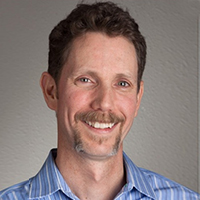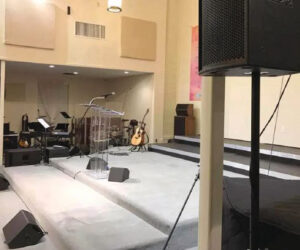A book I read a few years ago and reviewed for the AES Journal got me thinking about the blend of art and science we face regularly in professional audio.
The book, “Audio Production and Critical Listening; Technical Ear Training” by Jason Corey (Focal Press/CRC Press), is a very comprehensive work and covers every conceivable approach to ear training for mix engineers.
As with music, I believe that ear training is important in the audio world. Corey covers everything from EQ to dynamics processing to reverberation to the basics of microphone techniques. The book also includes a CD with software for ear training exercises.
Probably the most important concept is what the author calls “Isomorphic Mapping.” He explains that this is a process of “mapping technical and engineering parameters to perceptual attributes; to assist in the linking of auditory perceptions with control of physical properties of audio signals.” Frankly, I recommend this book to anyone in the audio business, but perhaps most importantly for those just starting out.
In the early 1990s, when I first became involved with sound reinforcement, a set of CDs by Dave Moulton called “Golden Ears” took a similar approach in terms of presenting audio examples of different frequencies, filters, compression, etc., so that the listener can learn these things “offline” rather than by trial and error.
Before that, a teacher in some of my audio classes insisted that we do a listening exercise at the beginning of each class. We listened to recordings and took notes on the instruments and voices in the mix, their relative levels, any effects we could hear, the acoustic space(s), and anything else that could be detected. All of this training has come in quite handy over the years.
Esoteric Heights
With all of the opportunities for training available, the question becomes “what do we do with them?” As with any tool in the toolbox, the results are usually more about our experience, skill level, and perhaps most importantly with any art form, aesthetic choices. In other words, do the tools influence the way we work, or does the way we work influence how we use the tools? I think the short answer is “both.”
Something I’ve come to understand over the years is that the really top people in any field become specialists. Sure, it could be said that a good rock engineer can probably mix any rock band and do at least a passable job. But what about the vast differences in sound and style between, say, folk rock and metal?
And as great as those differences are, there are even more significant disparities between those genres and other types of music. Is a good rock engineer capable of mixing jazz properly? Classical? Bluegrass? Each of these genres has its own written and unwritten rules, and some of them are found even in obscure corners of the planet.
For instance, I once attended a wedding in downtown Santa Fe (NM), just off the old Plaza in the center of town, where the entertainment for the dinner and dancing was a bluegrass group. True to form, they set up a single microphone and gathered ‘round to play and sing. When a particular musician had a solo or a lead line, he stepped closer to the mic. And the results were predictable: the group blended themselves amazingly well, and everything was crystal clear. Did it sound like the record? No, but it did sound like a live bluegrass band with all the energy and excitement you’d expect.
I still don’t know how those musicians can play guitar, banjo, mandolin, bass and fiddle, all while singing 2-, 3- and 4-part harmonies! I suppose one answer is that they’re specialists and have focused on a narrow niche of music probably for decades. Could these same musicians play other styles? Perhaps, but probably not nearly as well.
Top Down Or Bottom Up?
I’ve long believed that before we can make really good (and valid) aesthetic choices when mixing, we must have a foundation of understanding, or perhaps it’s better described as a “proper set of appropriate tools.” The material in Corey’s book and the accompanying software files can certainly add to the toolbox.
But then the pertinent question arises: what to do with these tools? This is “bottom up thinking,” and to understand the answer, we must look at how we approach our work with audio. To avoid becoming the hammer for which everything appears to be a nail, let’s start with the love of the craft.
What kind of music do you like? If you could pick any band or ensemble to work with, who would it be? The answers to these questions are “top down thinking,” in other words, taking the 10,000-foot view and seeing the entire picture. Without this view, we might be laying bricks but won’t know what we’re building.
So if, for instance, Metallica is your dream band, you probably already know nearly every song. And to figure out how that material was mixed, you might employ the critical listening skills and isomorphic mapping discussed above. From there, you could figure out how to improve the mix over what was presented originally. Right? That’s a good start.
Or say you prefer classical music. You’d want to study up on the work of Fred Vogler, Jack Vad, John Newton, and Michael Bishop, to name a few. Jazz would be no different, with Rudy van Gelder, Tom Jung, and Jim Anderson coming to mind. All of these great recordings, and the really great live shows, are mixed by specialists in their field. They have all studied the craft in a highly focused manner. Perhaps they didn’t start out aiming at one particular niche, but getting there is what allowed these people to rise to such heights of excellence.
Where Does That Leave Us?
It doesn’t make sense to try to be everything to everyone. As I recall, it was Aesop who said, “In trying to please all, he had pleased none.” So focus is important, but flexibility and going and growing with the flow should be part of the process, too.
And, as always, I heartily recommend engaging in training and education (or “bricklaying” as it’s sometimes called) so that the proper foundations are in place for good aesthetic choices based on a proper, deep and always growing understanding of the fundamentals. With that in mind, get started with reading an audio book and listening to some great music!
Karl Winkler serves as vice president of sales/service at Lectrosonics and has worked in professional audio for more than 25 years.















